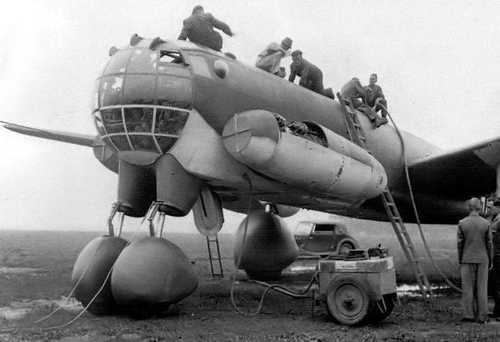
German Air Force
Ugli as sin...
FBbrummbar
Designer Hans Wocke initiated the creation of Ju 287. Design efforts began in 1943 and, on 16 August 1944, the aircraft made its maiden flight. The Ju 287V-1 experimental prototype was fitted with four Jumo 004B turbojet engines with 900 kg thrust each; two were placed on either side of the fuselage and two were on pylons under the wings. Rocket boosters were used to facilitate take-off. In all, 17 flights were made at speeds of up to 550 km/h. The aircraft featured a sweepforward wing. Wocke proposed this form to prevent the stall at the tips of the airfoil common for conventional swept wings. However, in this case, there could be some problems with wing stiffness (aero-elasticity) at high speeds, but Wocke believed that certain design changes would eliminate this problem. In particular, he moved the engine nacelles forward with respect to a wing stiffness line. Ju 287V-1 was damaged during a bombing raid on the Junkers plant and, by the end of the war, Junkers was working on the Ju 287V-2 variant with six turbojet engines, three under each wing. This aircraft had to develop a speed of 800 km/h and accommodate up to 4 tons of bombs. Its take-off weight was 21,200 kg. FB/Jake Donaldson/Official WW2 historians and buffs
4791 Views
1/8/2016
